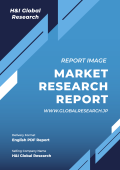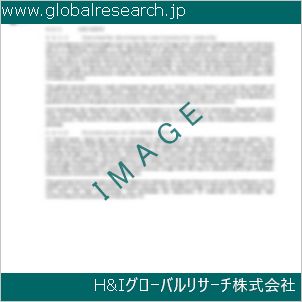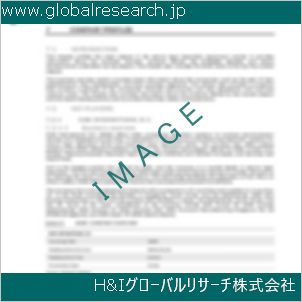1 Acrylic Product Market Overview
1.1 Product Definition
1.2 Acrylic Product Segment by Type
1.2.1 Global Acrylic Product Market Value Growth Rate Analysis by Type 2022 VS 2029
1.2.2 Cast Acrylic Sheet
1.2.3 Extruded Acrylic Sheet
1.3 Acrylic Product Segment by Application
1.3.1 Global Acrylic Product Market Value Growth Rate Analysis by Application: 2022 VS 2029
1.3.2 Automotive and Transport
1.3.3 Building and Construction
1.3.4 Signage
1.3.5 Others
1.4 Global Market Growth Prospects
1.4.1 Global Acrylic Product Production Value Estimates and Forecasts (2018-2029)
1.4.2 Global Acrylic Product Production Capacity Estimates and Forecasts (2018-2029)
1.4.3 Global Acrylic Product Production Estimates and Forecasts (2018-2029)
1.4.4 Global Acrylic Product Market Average Price Estimates and Forecasts (2018-2029)
1.5 Assumptions and Limitations
2 Market Competition by Manufacturers
2.1 Global Acrylic Product Production Market Share by Manufacturers (2018-2023)
2.2 Global Acrylic Product Production Value Market Share by Manufacturers (2018-2023)
2.3 Global Key Players of Acrylic Product, Industry Ranking, 2021 VS 2022 VS 2023
2.4 Global Acrylic Product Market Share by Company Type (Tier 1, Tier 2 and Tier 3)
2.5 Global Acrylic Product Average Price by Manufacturers (2018-2023)
2.6 Global Key Manufacturers of Acrylic Product, Manufacturing Base Distribution and Headquarters
2.7 Global Key Manufacturers of Acrylic Product, Product Offered and Application
2.8 Global Key Manufacturers of Acrylic Product, Date of Enter into This Industry
2.9 Acrylic Product Market Competitive Situation and Trends
2.9.1 Acrylic Product Market Concentration Rate
2.9.2 Global 5 and 10 Largest Acrylic Product Players Market Share by Revenue
2.10 Mergers & Acquisitions, Expansion
3 Acrylic Product Production by Region
3.1 Global Acrylic Product Production Value Estimates and Forecasts by Region: 2018 VS 2022 VS 2029
3.2 Global Acrylic Product Production Value by Region (2018-2029)
3.2.1 Global Acrylic Product Production Value Market Share by Region (2018-2023)
3.2.2 Global Forecasted Production Value of Acrylic Product by Region (2024-2029)
3.3 Global Acrylic Product Production Estimates and Forecasts by Region: 2018 VS 2022 VS 2029
3.4 Global Acrylic Product Production by Region (2018-2029)
3.4.1 Global Acrylic Product Production Market Share by Region (2018-2023)
3.4.2 Global Forecasted Production of Acrylic Product by Region (2024-2029)
3.5 Global Acrylic Product Market Price Analysis by Region (2018-2023)
3.6 Global Acrylic Product Production and Value, Year-over-Year Growth
3.6.1 North America Acrylic Product Production Value Estimates and Forecasts (2018-2029)
3.6.2 Europe Acrylic Product Production Value Estimates and Forecasts (2018-2029)
3.6.3 China Acrylic Product Production Value Estimates and Forecasts (2018-2029)
3.6.4 Japan Acrylic Product Production Value Estimates and Forecasts (2018-2029)
4 Acrylic Product Consumption by Region
4.1 Global Acrylic Product Consumption Estimates and Forecasts by Region: 2018 VS 2022 VS 2029
4.2 Global Acrylic Product Consumption by Region (2018-2029)
4.2.1 Global Acrylic Product Consumption by Region (2018-2023)
4.2.2 Global Acrylic Product Forecasted Consumption by Region (2024-2029)
4.3 North America
4.3.1 North America Acrylic Product Consumption Growth Rate by Country: 2018 VS 2022 VS 2029
4.3.2 North America Acrylic Product Consumption by Country (2018-2029)
4.3.3 United States
4.3.4 Canada
4.4 Europe
4.4.1 Europe Acrylic Product Consumption Growth Rate by Country: 2018 VS 2022 VS 2029
4.4.2 Europe Acrylic Product Consumption by Country (2018-2029)
4.4.3 Germany
4.4.4 France
4.4.5 U.K.
4.4.6 Italy
4.4.7 Russia
4.5 Asia Pacific
4.5.1 Asia Pacific Acrylic Product Consumption Growth Rate by Region: 2018 VS 2022 VS 2029
4.5.2 Asia Pacific Acrylic Product Consumption by Region (2018-2029)
4.5.3 China
4.5.4 Japan
4.5.5 South Korea
4.5.6 China Taiwan
4.5.7 Southeast Asia
4.5.8 India
4.6 Latin America, Middle East & Africa
4.6.1 Latin America, Middle East & Africa Acrylic Product Consumption Growth Rate by Country: 2018 VS 2022 VS 2029
4.6.2 Latin America, Middle East & Africa Acrylic Product Consumption by Country (2018-2029)
4.6.3 Mexico
4.6.4 Brazil
4.6.5 Turkey
5 Segment by Type
5.1 Global Acrylic Product Production by Type (2018-2029)
5.1.1 Global Acrylic Product Production by Type (2018-2023)
5.1.2 Global Acrylic Product Production by Type (2024-2029)
5.1.3 Global Acrylic Product Production Market Share by Type (2018-2029)
5.2 Global Acrylic Product Production Value by Type (2018-2029)
5.2.1 Global Acrylic Product Production Value by Type (2018-2023)
5.2.2 Global Acrylic Product Production Value by Type (2024-2029)
5.2.3 Global Acrylic Product Production Value Market Share by Type (2018-2029)
5.3 Global Acrylic Product Price by Type (2018-2029)
6 Segment by Application
6.1 Global Acrylic Product Production by Application (2018-2029)
6.1.1 Global Acrylic Product Production by Application (2018-2023)
6.1.2 Global Acrylic Product Production by Application (2024-2029)
6.1.3 Global Acrylic Product Production Market Share by Application (2018-2029)
6.2 Global Acrylic Product Production Value by Application (2018-2029)
6.2.1 Global Acrylic Product Production Value by Application (2018-2023)
6.2.2 Global Acrylic Product Production Value by Application (2024-2029)
6.2.3 Global Acrylic Product Production Value Market Share by Application (2018-2029)
6.3 Global Acrylic Product Price by Application (2018-2029)
7 Key Companies Profiled
7.1 Mitsubishi Chemical
7.1.1 Mitsubishi Chemical Acrylic Product Corporation Information
7.1.2 Mitsubishi Chemical Acrylic Product Product Portfolio
7.1.3 Mitsubishi Chemical Acrylic Product Production, Value, Price and Gross Margin (2018-2023)
7.1.4 Mitsubishi Chemical Main Business and Markets Served
7.1.5 Mitsubishi Chemical Recent Developments/Updates
7.2 Trinseo
7.2.1 Trinseo Acrylic Product Corporation Information
7.2.2 Trinseo Acrylic Product Product Portfolio
7.2.3 Trinseo Acrylic Product Production, Value, Price and Gross Margin (2018-2023)
7.2.4 Trinseo Main Business and Markets Served
7.2.5 Trinseo Recent Developments/Updates
7.3 Schweiter Technologies
7.3.1 Schweiter Technologies Acrylic Product Corporation Information
7.3.2 Schweiter Technologies Acrylic Product Product Portfolio
7.3.3 Schweiter Technologies Acrylic Product Production, Value, Price and Gross Margin (2018-2023)
7.3.4 Schweiter Technologies Main Business and Markets Served
7.3.5 Schweiter Technologies Recent Developments/Updates
7.4 Plaskolite
7.4.1 Plaskolite Acrylic Product Corporation Information
7.4.2 Plaskolite Acrylic Product Product Portfolio
7.4.3 Plaskolite Acrylic Product Production, Value, Price and Gross Margin (2018-2023)
7.4.4 Plaskolite Main Business and Markets Served
7.4.5 Plaskolite Recent Developments/Updates
7.5 Unigel Group
7.5.1 Unigel Group Acrylic Product Corporation Information
7.5.2 Unigel Group Acrylic Product Product Portfolio
7.5.3 Unigel Group Acrylic Product Production, Value, Price and Gross Margin (2018-2023)
7.5.4 Unigel Group Main Business and Markets Served
7.5.5 Unigel Group Recent Developments/Updates
7.6 Asia Poly
7.6.1 Asia Poly Acrylic Product Corporation Information
7.6.2 Asia Poly Acrylic Product Product Portfolio
7.6.3 Asia Poly Acrylic Product Production, Value, Price and Gross Margin (2018-2023)
7.6.4 Asia Poly Main Business and Markets Served
7.6.5 Asia Poly Recent Developments/Updates
7.7 Donchamp
7.7.1 Donchamp Acrylic Product Corporation Information
7.7.2 Donchamp Acrylic Product Product Portfolio
7.7.3 Donchamp Acrylic Product Production, Value, Price and Gross Margin (2018-2023)
7.7.4 Donchamp Main Business and Markets Served
7.7.5 Donchamp Recent Developments/Updates
7.8 Jumei
7.8.1 Jumei Acrylic Product Corporation Information
7.8.2 Jumei Acrylic Product Product Portfolio
7.8.3 Jumei Acrylic Product Production, Value, Price and Gross Margin (2018-2023)
7.8.4 Jumei Main Business and Markets Served
7.7.5 Jumei Recent Developments/Updates
7.9 Jiushixing
7.9.1 Jiushixing Acrylic Product Corporation Information
7.9.2 Jiushixing Acrylic Product Product Portfolio
7.9.3 Jiushixing Acrylic Product Production, Value, Price and Gross Margin (2018-2023)
7.9.4 Jiushixing Main Business and Markets Served
7.9.5 Jiushixing Recent Developments/Updates
7.10 Shen Chuen Acrylic
7.10.1 Shen Chuen Acrylic Acrylic Product Corporation Information
7.10.2 Shen Chuen Acrylic Acrylic Product Product Portfolio
7.10.3 Shen Chuen Acrylic Acrylic Product Production, Value, Price and Gross Margin (2018-2023)
7.10.4 Shen Chuen Acrylic Main Business and Markets Served
7.10.5 Shen Chuen Acrylic Recent Developments/Updates
7.11 Raychung Acrylic
7.11.1 Raychung Acrylic Acrylic Product Corporation Information
7.11.2 Raychung Acrylic Acrylic Product Product Portfolio
7.11.3 Raychung Acrylic Acrylic Product Production, Value, Price and Gross Margin (2018-2023)
7.11.4 Raychung Acrylic Main Business and Markets Served
7.11.5 Raychung Acrylic Recent Developments/Updates
7.12 Elastin
7.12.1 Elastin Acrylic Product Corporation Information
7.12.2 Elastin Acrylic Product Product Portfolio
7.12.3 Elastin Acrylic Product Production, Value, Price and Gross Margin (2018-2023)
7.12.4 Elastin Main Business and Markets Served
7.12.5 Elastin Recent Developments/Updates
7.13 Chimei
7.13.1 Chimei Acrylic Product Corporation Information
7.13.2 Chimei Acrylic Product Product Portfolio
7.13.3 Chimei Acrylic Product Production, Value, Price and Gross Margin (2018-2023)
7.13.4 Chimei Main Business and Markets Served
7.13.5 Chimei Recent Developments/Updates
7.14 Xintao
7.14.1 Xintao Acrylic Product Corporation Information
7.14.2 Xintao Acrylic Product Product Portfolio
7.14.3 Xintao Acrylic Product Production, Value, Price and Gross Margin (2018-2023)
7.14.4 Xintao Main Business and Markets Served
7.14.5 Xintao Recent Developments/Updates
7.15 Monarch
7.15.1 Monarch Acrylic Product Corporation Information
7.15.2 Monarch Acrylic Product Product Portfolio
7.15.3 Monarch Acrylic Product Production, Value, Price and Gross Margin (2018-2023)
7.15.4 Monarch Main Business and Markets Served
7.15.5 Monarch Recent Developments/Updates
8 Industry Chain and Sales Channels Analysis
8.1 Acrylic Product Industry Chain Analysis
8.2 Acrylic Product Key Raw Materials
8.2.1 Key Raw Materials
8.2.2 Raw Materials Key Suppliers
8.3 Acrylic Product Production Mode & Process
8.4 Acrylic Product Sales and Marketing
8.4.1 Acrylic Product Sales Channels
8.4.2 Acrylic Product Distributors
8.5 Acrylic Product Customers
9 Acrylic Product Market Dynamics
9.1 Acrylic Product Industry Trends
9.2 Acrylic Product Market Drivers
9.3 Acrylic Product Market Challenges
9.4 Acrylic Product Market Restraints
10 Research Finding and Conclusion
11 Methodology and Data Source
11.1 Methodology/Research Approach
11.1.1 Research Programs/Design
11.1.2 Market Size Estimation
11.1.3 Market Breakdown and Data Triangulation
11.2 Data Source
11.2.1 Secondary Sources
11.2.2 Primary Sources
11.3 Author List
11.4 Disclaimer
| ※参考情報 アクリル製品は、アクリル樹脂(ポリメチルメタクリレート、PMMA)を基にした様々な製品を指します。この材料は、透明性、耐久性、加工のしやすさが特徴であり、その特性から多くの産業で幅広く利用されています。以下では、アクリル製品の定義、特徴、種類、用途、関連技術について詳しく説明いたします。 アクリル製品の定義は、主にアクリル樹脂を素材とする製品全般を指します。アクリル樹脂は、化学的に安定しており、光を透過する能力が高いため、ガラスの代替材料としても広く使用されています。その透明感は、美しさだけでなく、視認性の向上にも寄与します。アクリルもまた、プラスチックの一種であり、熱可塑性樹脂としての特性を持ちます。 アクリル製品の特徴としては、まずその透明性が挙げられます。アクリルは、波長400nmから700nmの可視光をほぼ100%透過するため、光の透過率が非常に高いです。また、紫外線に対する耐性も強く、劣化しにくいため、屋外での使用にも適しています。さらに、アクリルは軽量であるため、移動や設置が容易です。この特性は、特に大型の製品や構造物において重要です。 耐衝撃性もアクリルの大きな特長です。ガラスに比べてはるかに高い耐衝撃性を持っているため、安全性が求められる場所でも安心して使用できます。この特性から、アクリル製品は公共施設や商業施設など、さまざまな場所で使用されています。また、優れた加工性を有しており、切断や研磨、成形などが容易であるため、さまざまな形状やデザインに対応可能です。 アクリル製品には多くの種類があります。代表的なものとしては、アクリル板、アクリル棒、アクリルパイプなどの基本形状があります。これらは、さまざまな用途に応じてカットされ、加工されることで特定の製品となります。オーダーメイドのアクリル製品も多く、特にディスプレイ用ケースやサインボードなど、商業的な需要に応じた多種多様な形状が作られています。 アクリル板はそのまま使用されることが多く、特に内装や店舗のディスプレイなどで人気があります。色付きのアクリル板もあり、デザイン性と機能性を兼ね備えた製品として幅広く使用されています。さらに、アクリルを利用した照明器具もあります。アクリルを通した光はとても美しく、インテリアに華やかさを与えることができます。 用途は非常に広範であり、主に以下の分野で見られます。まず、建築・内装分野では、アクリル板が窓や仕切りの材料として使用されることが一般的です。また、店舗のディスプレイや展示会ブースの設営にも多く利用されています。アクリル製のサインボードやポスターボードは、視認性が高く、広告媒体としての役割を果たします。 医療分野においてもアクリルは重要な役割を果たしています。例えば、手術室や診療所で使用される透明な隔壁や器具は、アクリル製が多いです。耐薬品性があり、洗浄が容易なため、衛生管理が求められる環境に適しています。また、家庭用品としては、アクリル製の収納ボックスやディスプレイケース、装飾品などが一般的です。透明感が強調され、展示物を美しく演出することができます。 さらに、アクリル製品は自動車業界でも利用されており、ライトカバーやメーター類のカバーとして使用されています。耐候性が高いため、屋外での使用に適しており、特に自動車が直面するさまざまな環境に耐えることができます。 環境への配慮が求められる現代において、アクリル製品のリサイクルも注目されています。アクリル樹脂は再利用が可能であり、特にアクリル製品の廃棄物を再処理して新しい製品に生まれ変わらせる技術が進化しています。これにより、廃棄物の削減と資源の有効活用が期待されています。 アクリル製品の関連技術についても触れておきましょう。アクリルの製造にはポリメチルメタクリレートをモノマーとした重合によるプロセスが一般的ですが、近年では新たな製造方法や加工技術の開発が進んでいます。例えば、3Dプリンティング技術の導入により、複雑な形状のアクリル製品が迅速に製造できるようになりました。これにより、より自由なデザイン表現が可能になり、エンドユーザーのニーズに応じた製品開発が進められています。 さらに、アクリルの表面処理技術も発展しています。耐傷性を向上させるためのコーティングや、抗菌性を持たせるための処理が行われることが増えています。これにより、アクリル製品の機能性が高まり、より多様なニーズに応えることができるようになっています。 結論として、アクリル製品はその特性から多岐にわたる分野で使用されており、今後もその需要は続くと考えられます。透明性、耐久性、加工のしやすさといった特長を活かし、さまざまな形状や用途で発展していくことでしょう。環境への配慮が求められる中で、リサイクル技術や新たな加工技術が進化することで、アクリル製品の未来には明るい展望が待っていると期待されています。 |
❖ 免責事項 ❖
http://www.globalresearch.jp/disclaimer












